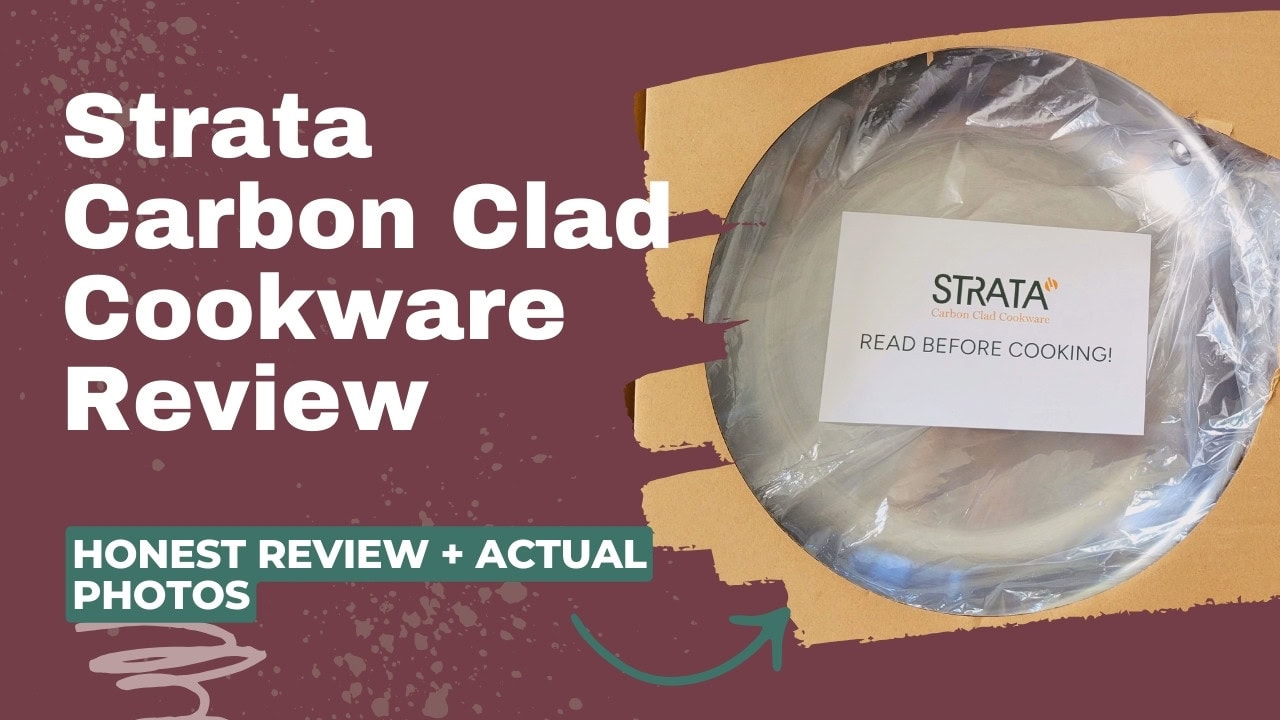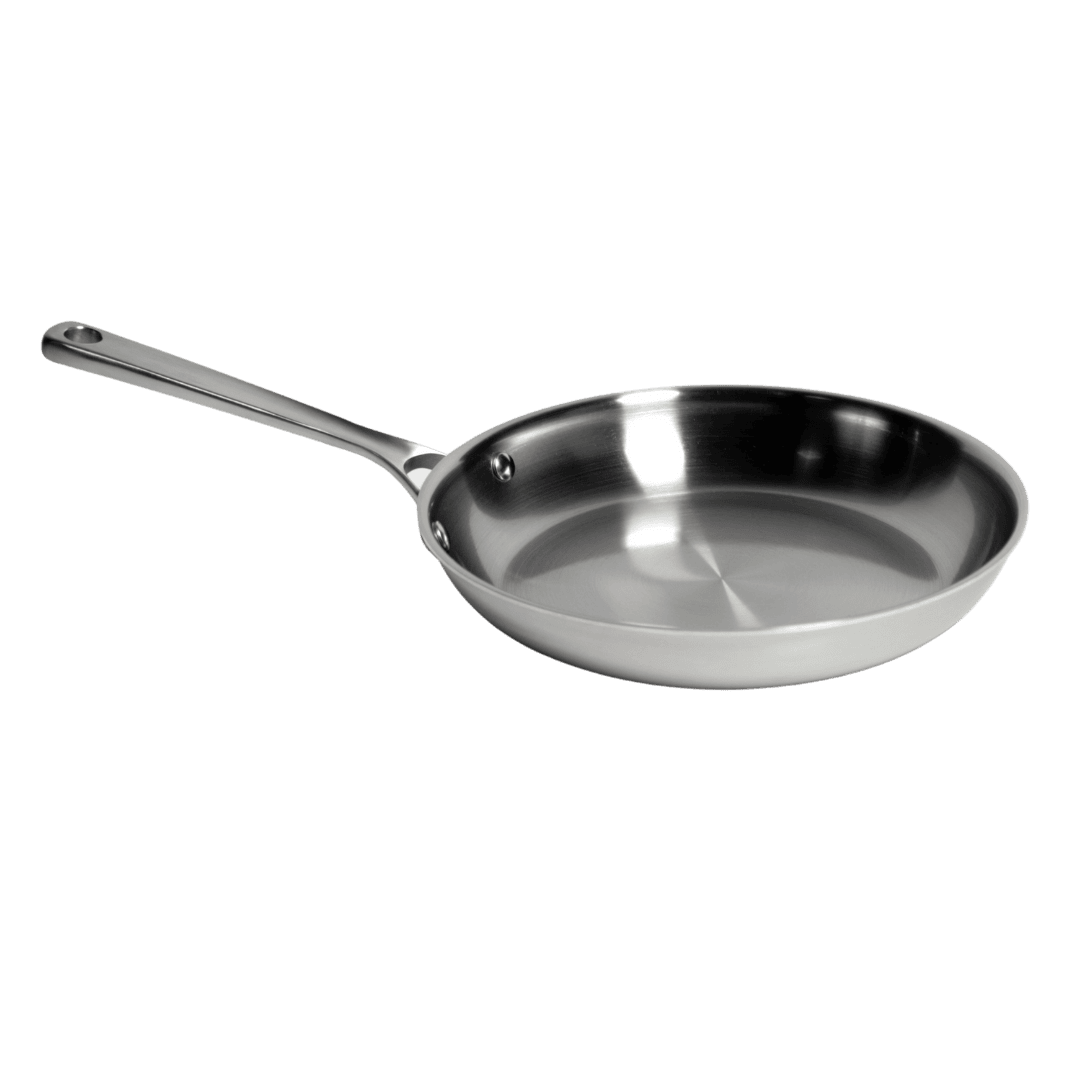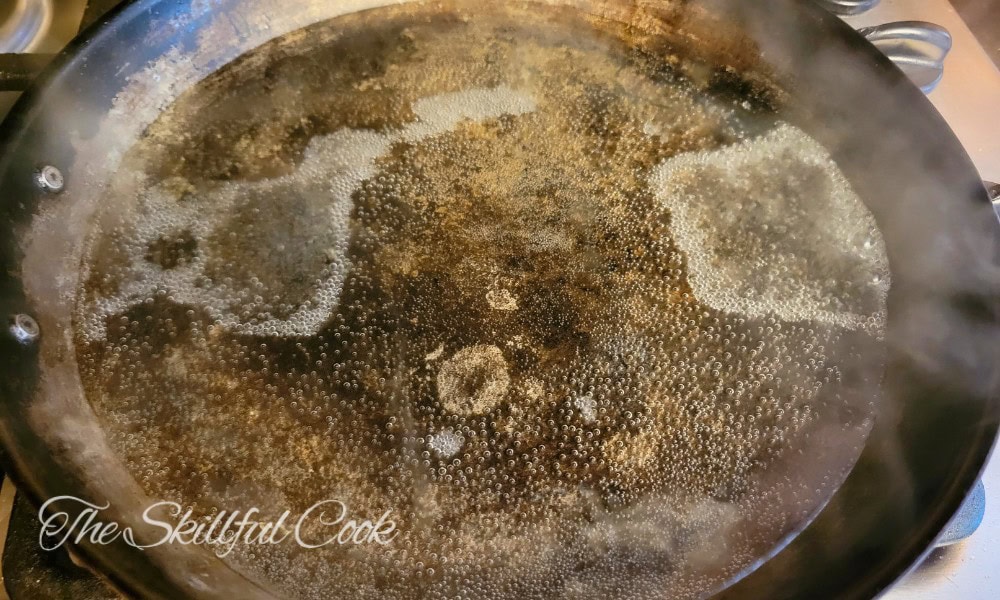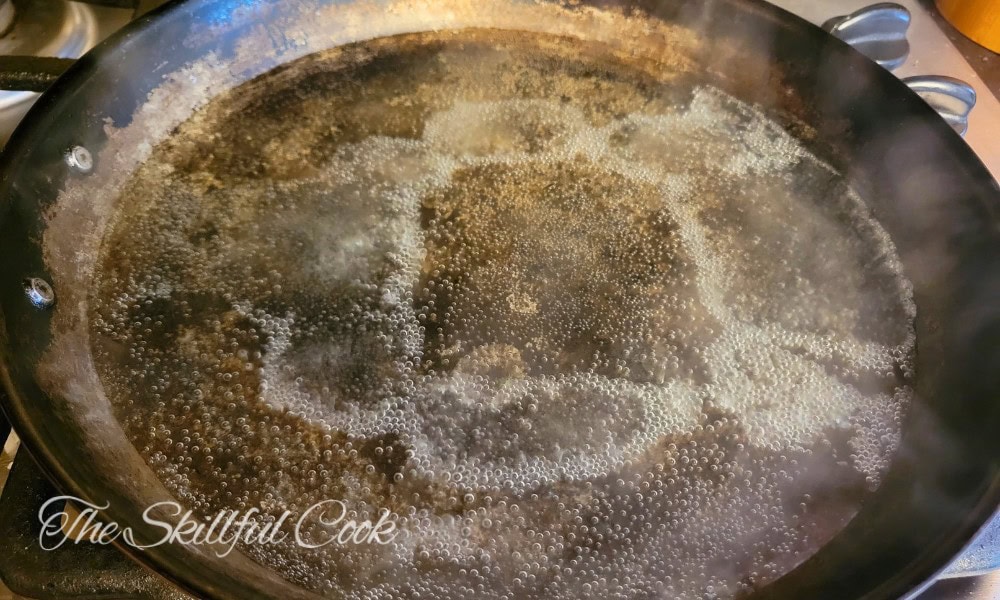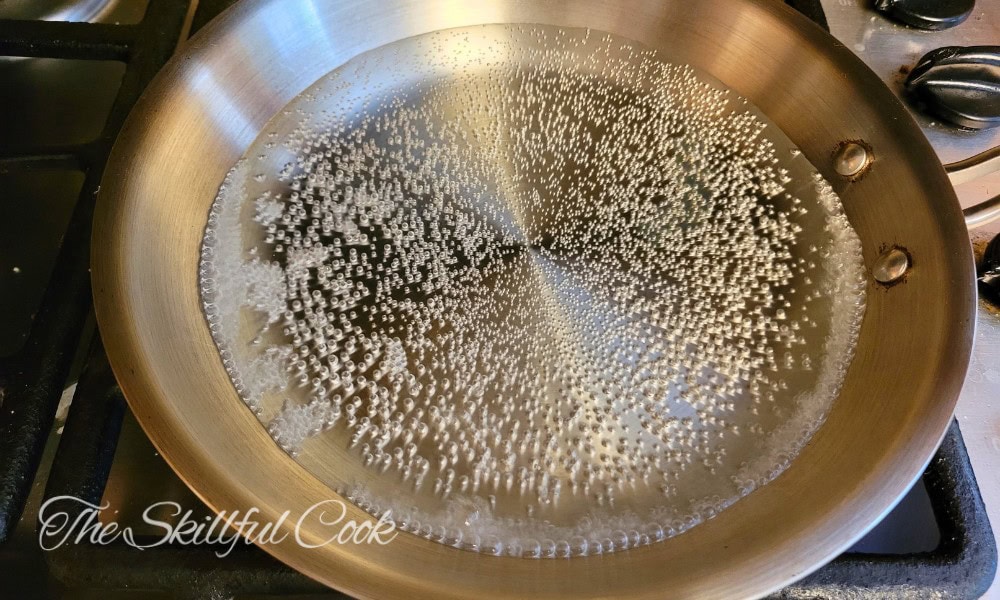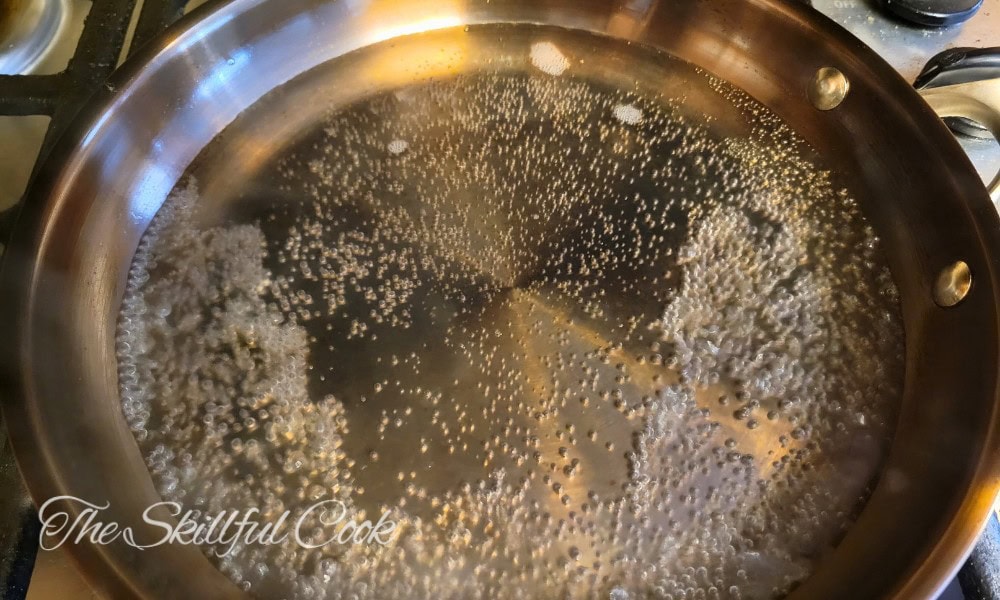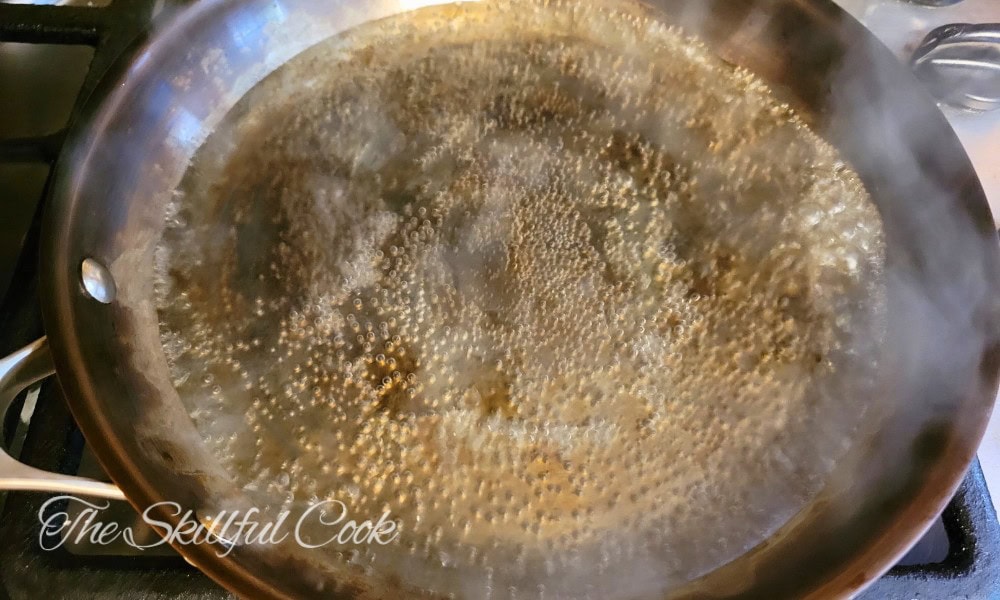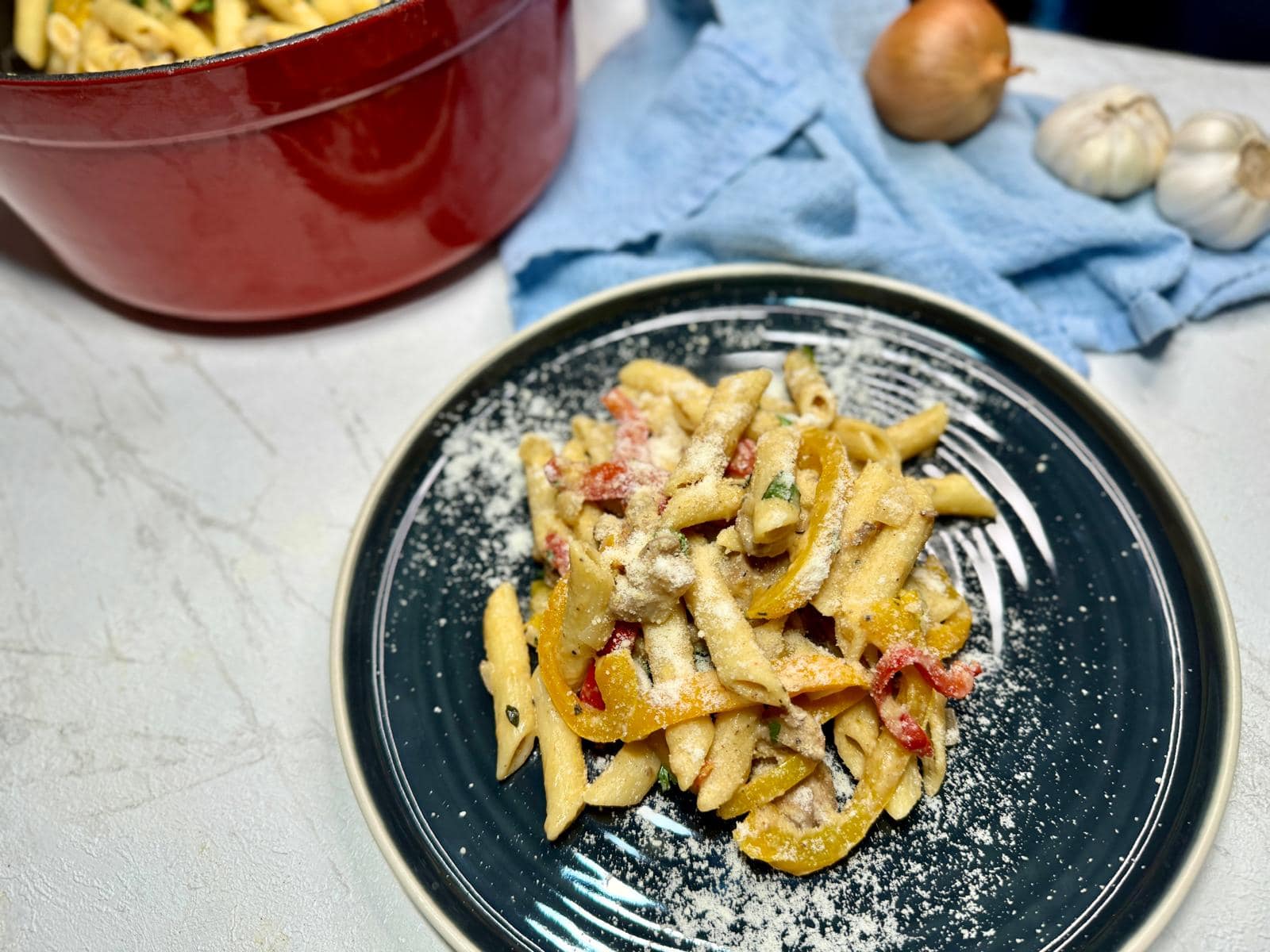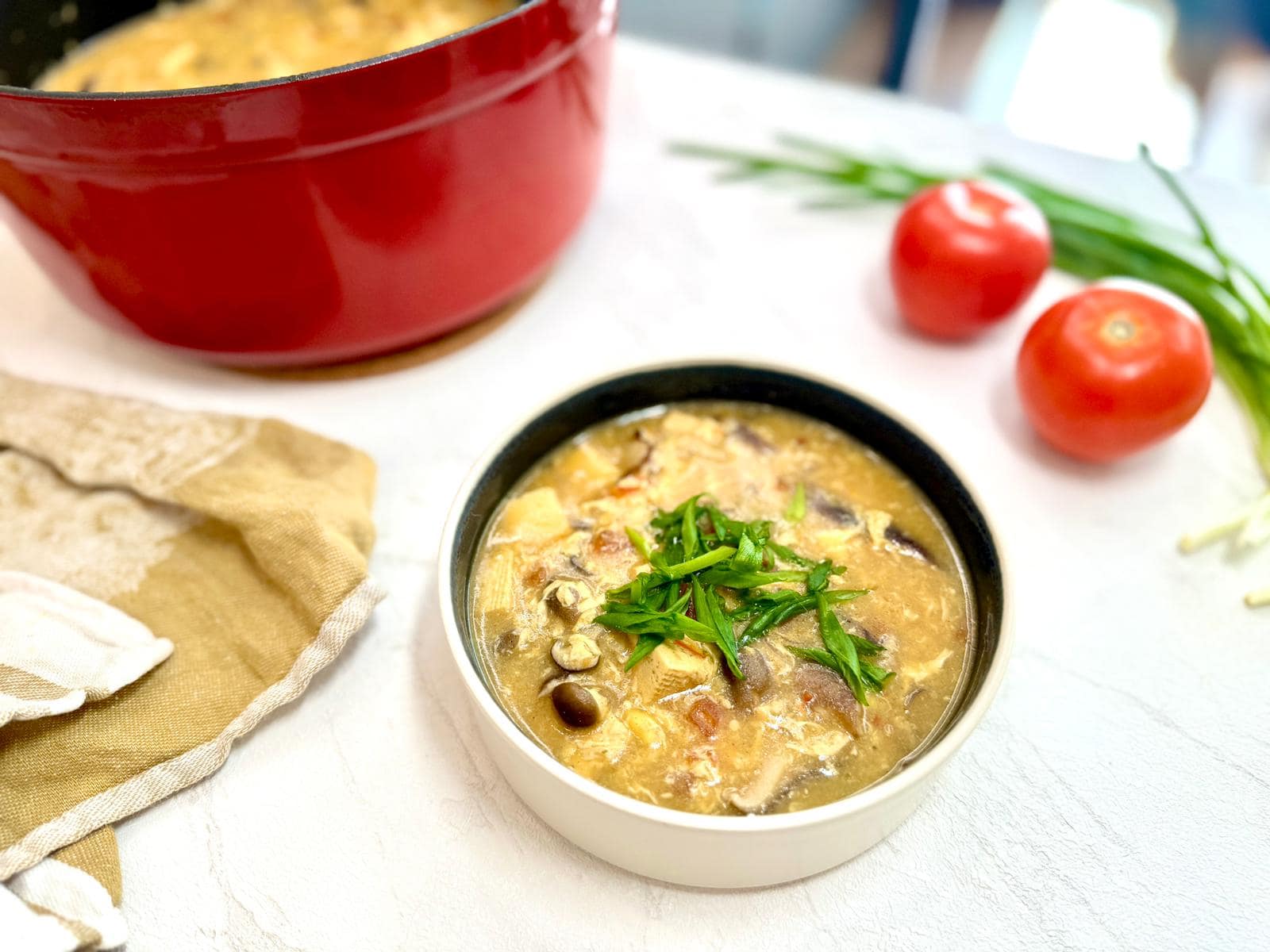Pros
Cons
I was unboxing the Strata pan when my son walked into the kitchen. “What’s that?” he asked. “It’s a hybrid pan,” I said. His response was, in typical six-year-old style: “Is that okay?”
“Yes, of course it’s okay!” I laughed.
But is it, really? Can a brand-new type of carbon steel pan made by a small manufacturer in Maryland hold up to time-honored brands like Matfer and De Buyer?
That’s what I’m here to find out.
What is Strata Cookware?
Strata fry pans are fully metal pans with three different layers. The base is ferritic (magnetic) stainless steel, so the pans are induction-compatible. The middle layer is aluminum, which distributes heat. The pan is finished with a very thin top layer of carbon steel that needs to be seasoned before use. It has a brushed stainless steel handle.
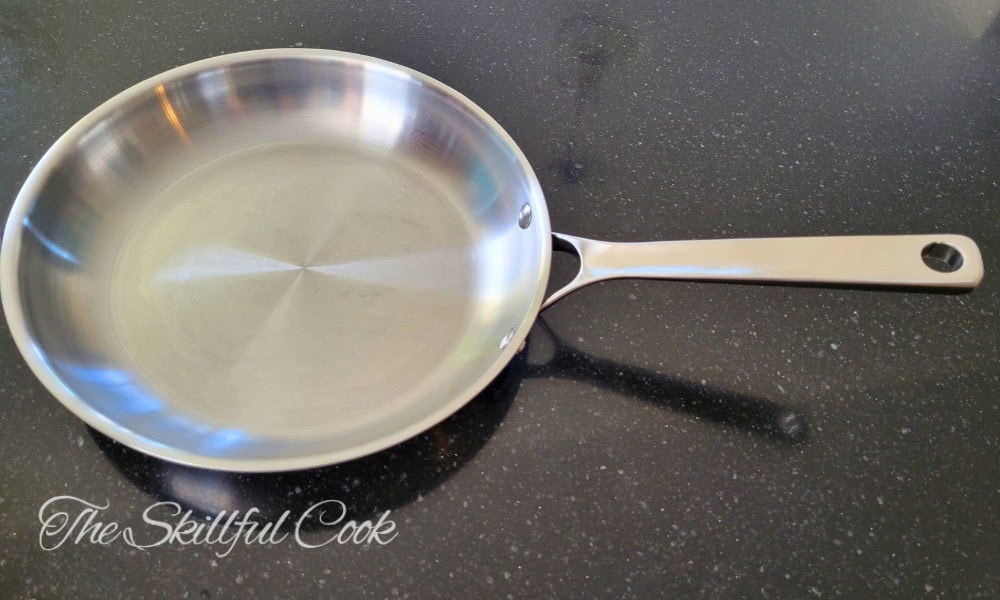
What Makes It Unique?
Strata is the world’s first “clad carbon steel” pan, and its designers hope it will solve several problems with modern cookware. The aluminum core should make the pan more responsive to heat than regular carbon steel, and the stainless steel base should help resist warping.
But why does it have a carbon steel surface rather than stainless steel? Because of carbon steel’s nonstick properties. When seasoned right, carbon steel releases food a lot easier than stainless. If the Strata pan works, it could reduce the pain points of cooking on carbon steel, and provide casual cooks with a pan that handles like a traditional nonstick skillet – without the fragile coatings of ceramic or Teflon nonstick pans.
For this review, I tested a 10.5” Strata skillet.
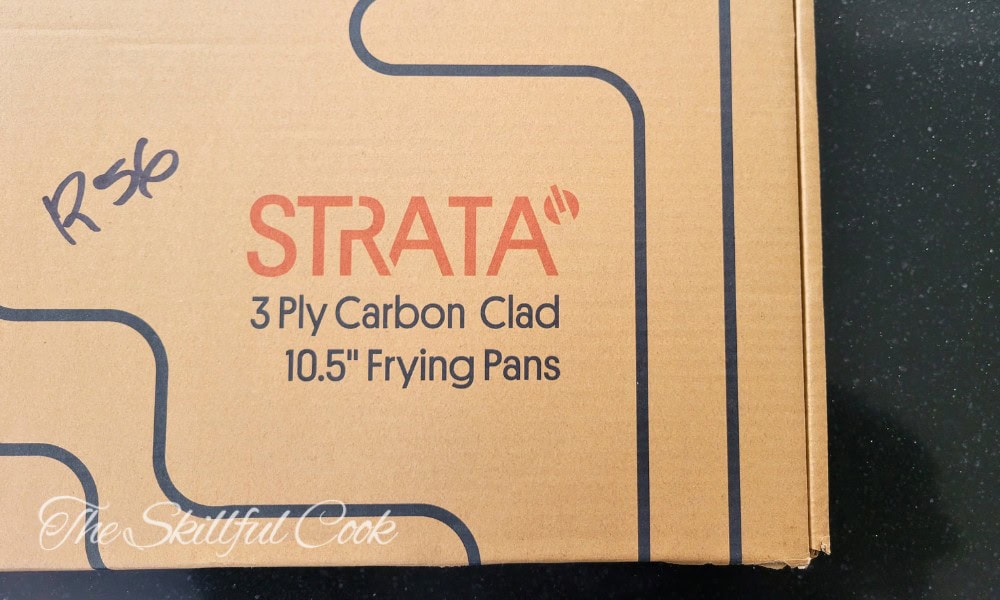
Disclaimer: At the Skillful Cook, we received a complimentary product for this review. However, the opinions expressed are our own and are not influenced by this arrangement.
Comparison Table vs Other Brands
| Strata | De Buyer Mineral B | All Clad | |
|---|---|---|---|
| Size | 10.5” | 11” | 10” |
| Cooking Surface Diameter | 8” | 8.3” | 8” |
| Weight | 2.4 pounds | 4.8 pounds | 2.3 pounds |
| Oven-Safe? | Yes | Only Pro version | Yes |
| Dishwasher? | No | No | Yes |
| Core Material | Aluminum | Carbon Steel | Aluminum |
| Surface Material | Carbon Steel | Carbon Steel | Stainless Steel |
| Country of Origin | US / China | France | US |
First Thoughts
When I opened the thoughtfully designed packaging for the Strata pan, I was greeted with a friendly note from the company and a great care sheet and booklet.
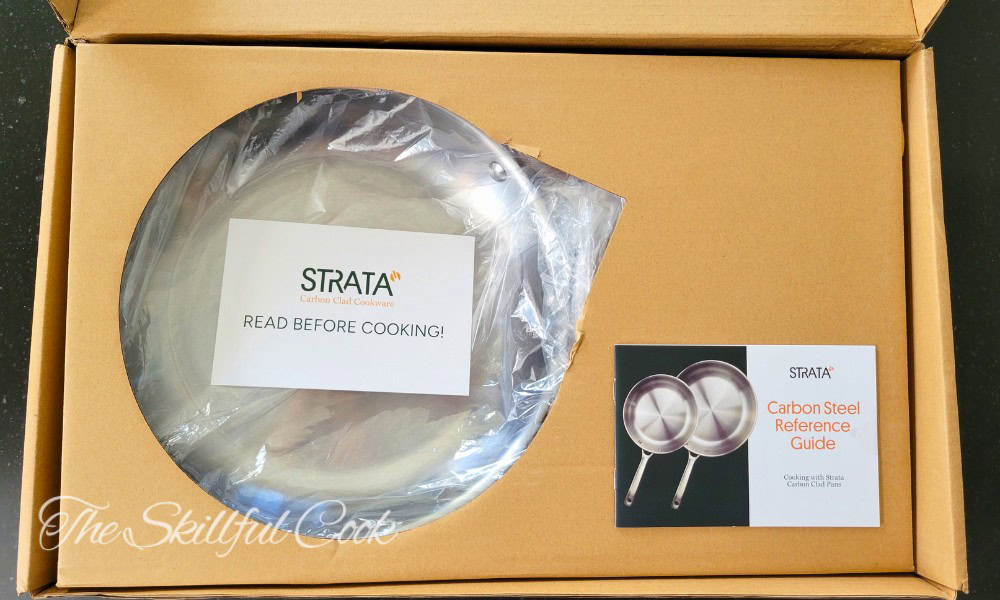
In case you didn’t know, Strata launched earlier this year with a wildly successful Kickstarter campaign. The company stayed in close touch with its backer community, engaging with questions and concerns, and was also spotted asking for feedback on Reddit. When consumers spoke, they listened.
The Strata care booklet gives practical and easy-to-follow advice for using the pan to its best potential. There’s no unrealistic hype or fantastic claims in this pan’s marketing.
The company is very aware of the challenges of carbon steel, and while the pan is designed to alleviate some of them, they are realistic about others.

Seasoning the Strata Pan
I’m no stranger to seasoning carbon steel pans and I have my own favorite methods. But to test the product fairly, I cleaned and seasoned the pan according to the instructions in the care booklet. The booklet recommends the oven method of seasoning. It includes extra tips – like wiping out extra oil after a few minutes of heat – to make the process as foolproof as possible.
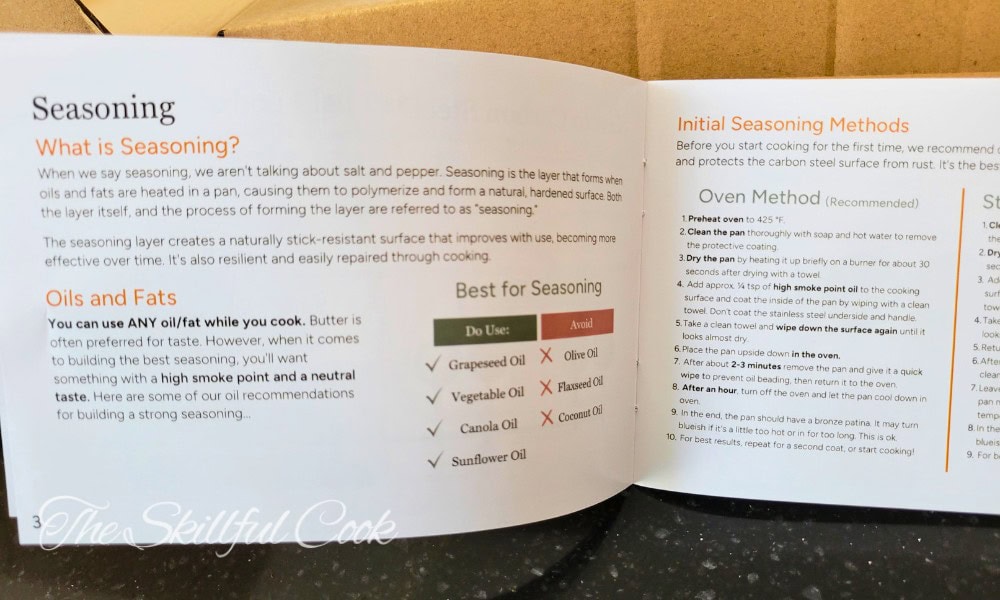
I was pleased with how the first coat of seasoning came out. I’d feel comfortable gifting this pan to someone new to CS, knowing that the care sheet would guide them through.
Before seasoning:
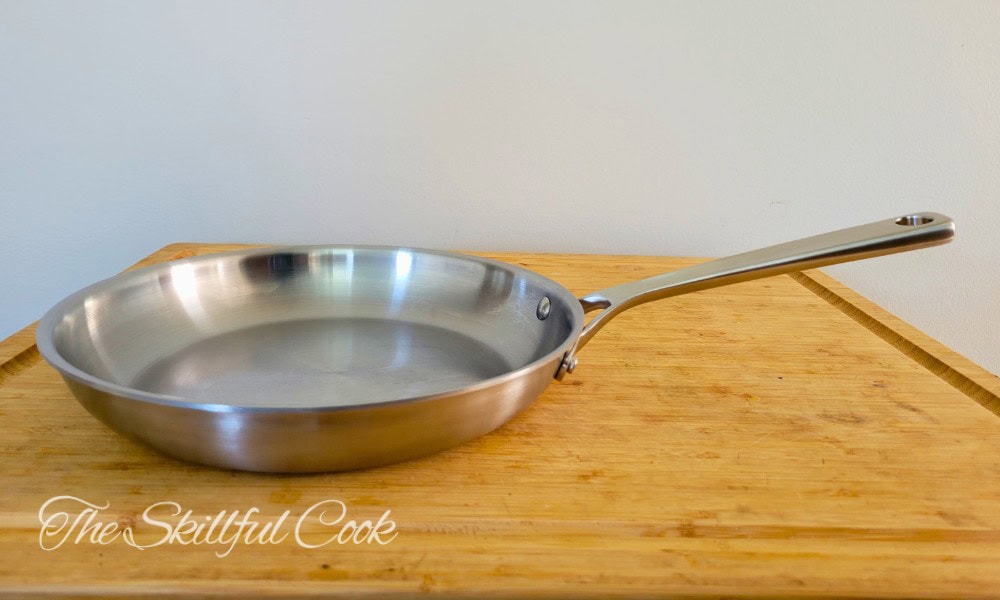
During seasoning:
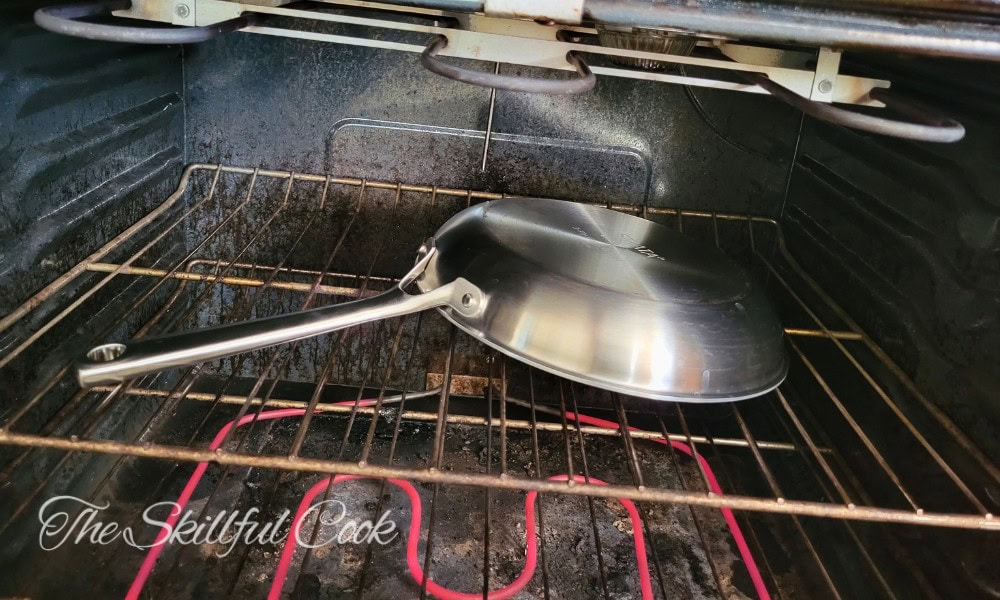
After seasoning:
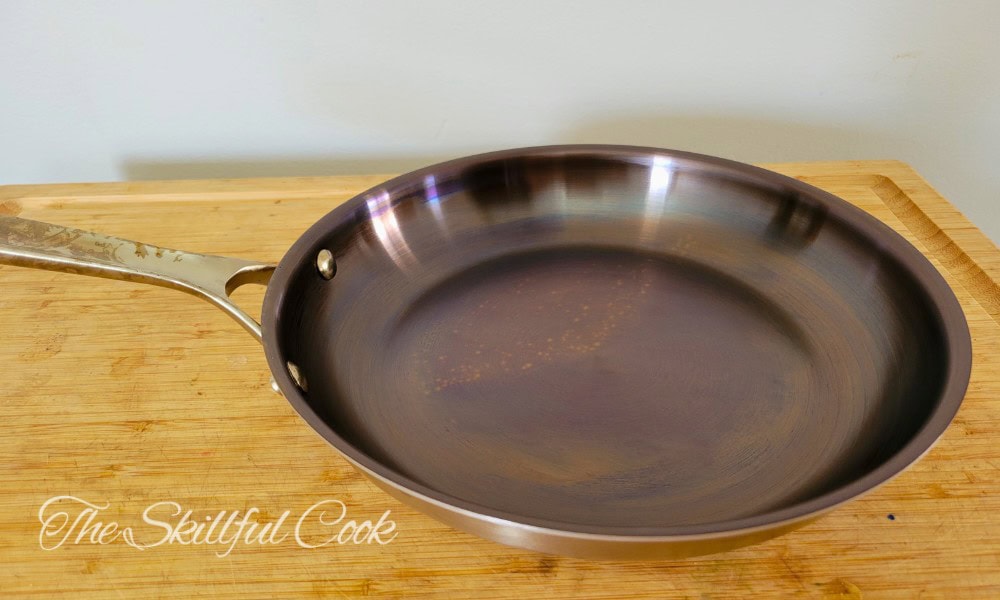
Cooking Performance
I love the shape and size of the 10.5” Strata pan. It has 1.8” sides that hold plenty of food, but that you can easily slip a spatula into. Unlike European carbon steel pans with straight, angled sides, the sides of the Strata pan bow to maximize the cooking surface area, and then finish with a slight pouring lip. The pan is very lightweight. It feels more like a Misen than a De Buyer or Matfer – and honestly, more like an All Clad stainless pan than a carbon steel of any kind.
The Egg Test
It’s asking a lot of a carbon steel pan to fry an egg after just one coat of seasoning, but I try it with all my pans. The seasoned finish on the Strata was extremely smooth, although the layer of polymerized oil was quite thin.
I heated the pan and added a bit of oil. I monitored it with an infrared thermometer, testing different parts of the pan as it heated. Again, I noticed the edges getting hotter than the center on my gas stove.
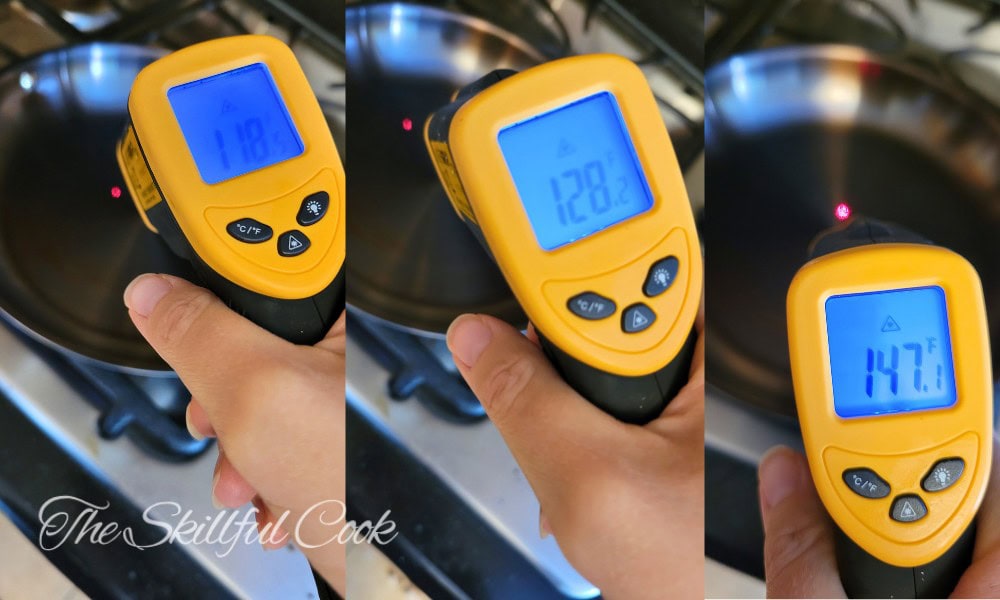
While temperature testing, I let the pan get too hot overall, and my egg stuck. But this was user error; carbon steel sticks if it gets too hot. This also revealed that the pan came to temperature faster than I expected – a regular carbon steel pan would not have gotten too hot that quickly.
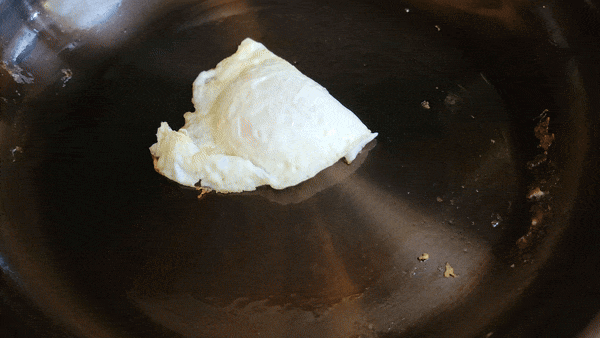
I was more careful with the second egg and it fried very nicely. (In the week I’ve owned this pan, it’s actually become my go-to for eggs.)
Pancakes
To me, one of the benefits of carbon steel is that you don’t have to scrub it immaculately clean between uses. Yes, bits of food-turned-carbon stuck on the surface of your pan will spoil performance and seasoning – so you need to get those off. But, for example, if there’s a bit of oil left on the pan from frying an egg, I want to be able to cook pancakes in it without stripping it clean first.
So, I made pancakes after my egg test. And the Strata pan handled them very well. It released them very well. As I made a few batches of pancakes, the Strata pan was on the heat long enough to come to an even temperature, without hot spots. It also changed temperature more quickly than my 3mm carbon steel when I lowered the heat.
In short, I found the benefit of the aluminum core to be, not how quickly it came to an even temperature, but how precisely I could control the temperature of the pan.
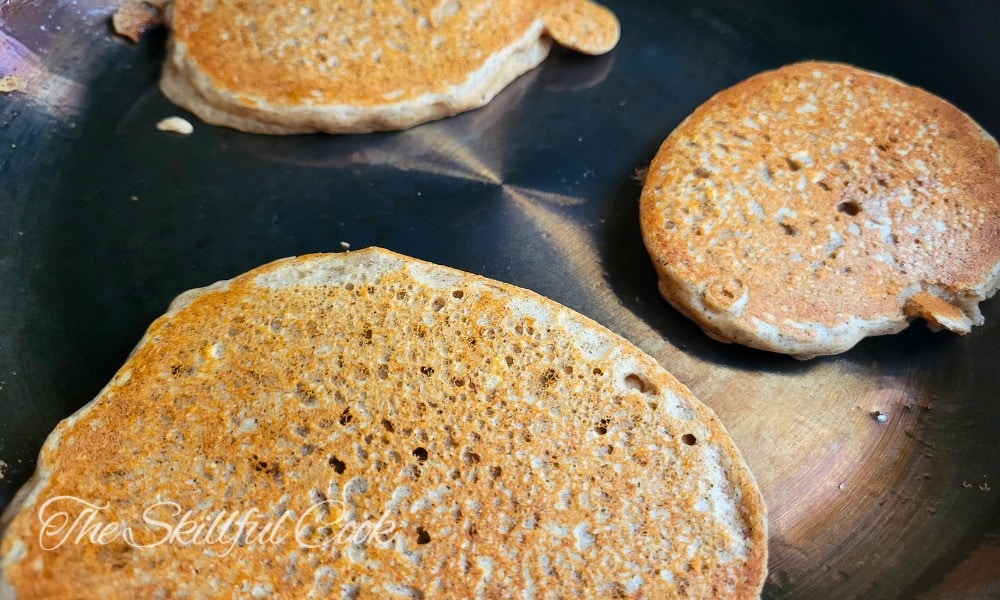
Searing Protein
The Strata pan was able to handle the high temperature necessary to get a good sear on protein like steak or chicken. It doesn’t hold the heat as long as a thicker iron pan – so you’ll need to adjust your methods if you’re used to cooking on cast iron or 3mm carbon steel like a de Buyer.
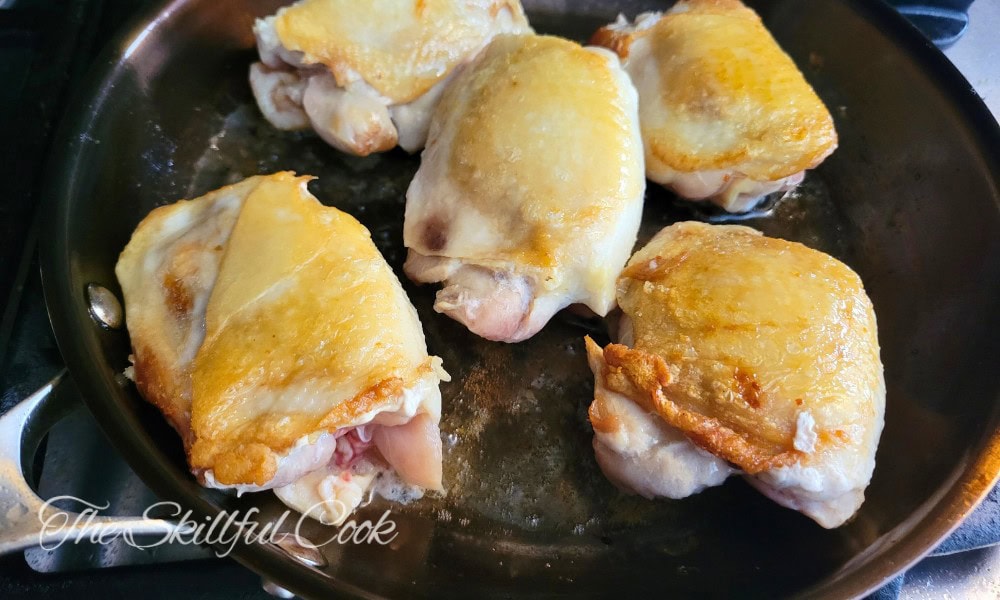
The Water Test
Finally, I like to test pans by boiling water for several minutes. This gives me an idea of how quickly the pan comes to temperature, how evenly it distributes the heat, and how it handles extended cooking. I watch for evenness as the bubbles form in the pan, and I take the temperature with an infrared thermometer.
I wanted to compare Strata to a full carbon steel pan (Misen, 3mm) and to a tri-ply stainless steel skillet (Heritage Steel.) I set my stove to level “6” and added 2 cups of water to each pan.
Here’s what I discovered:
- The Strata skillet boiled water the fastest of the three.
- The Heritage Steel skillet had the most even temperature – at first.
- The Strata skillet showed hot spots at the boiling point, but these evened out after a couple minutes of cooking.
- The Misen had the most pronounced hot spots, and they persisted as the water continued boiling.
| Strata (Tri-ply Hybrid) | Misen (3mm CS) | Heritage Steel (Tri-ply SS) | |
|---|---|---|---|
| Time to Boil | 2 min, 55 sec | 3 min, 38 sec | 3 min, 12 sec |
| Temp difference between the edges and center of the pan at 3 minutes on heat. | 29°F | 30°F | 19°F |
| Temp difference at 6 minutes on heat. | 21°F | 32°F | 18°F |
Note #1: While you typically don’t use carbon steel for boiling, a few minutes of hot water in a pan shouldn’t hurt the seasoning at all. (In fact, respected CS manufacturer Made In recommends boiling water as a cleaning method. Water should remove stuck food, but not oil, unless you add an acid like vinegar.) After boiling water for a few minutes, the seasoning layer on this pan was not affected.
Note #2: The Misen I used was the original design, which is 3mm thick rather than the current 2mm Misen pans.
Build Quality
Strata pans appear to be very well-built. One of my concerns when I first heard about this new product was whether the lamination between the layers of different metals would hold up over time, but since they are completely fused, it’s unlikely to become an issue.
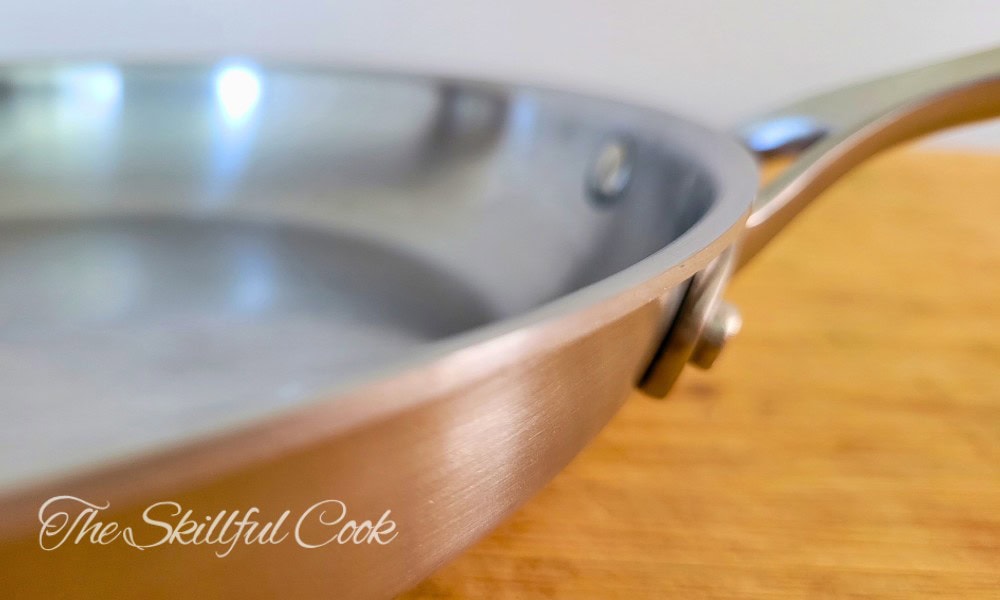
The handle is securely attached to the pan with rivets. Since some cooks prefer pans without rivets for a simplified cleaning experience, Strata is looking into rivetless options.
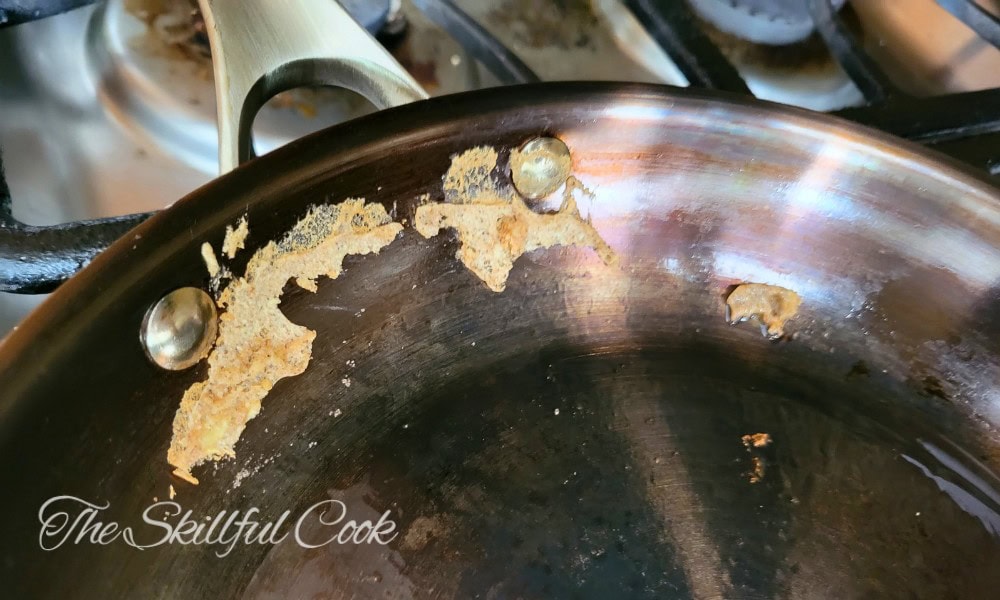
Design and Comfort
The total thickness of the Strata pan body is 3mm. Yet, since the thickest layer is lightweight aluminum, the total weight of the pan is almost exactly two pounds. This makes it about half the weight of a 3mm 10.5” De Buyer pan, and a pound or more lighter than 2mm carbon steel pans of comparable size.
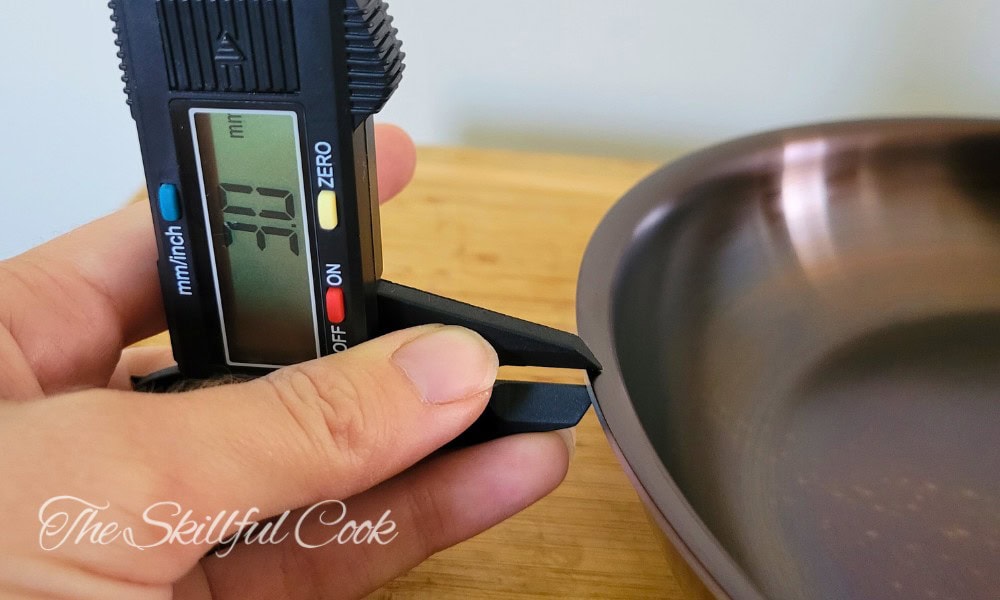
The light weight struck me as soon as I picked up the pan. And it definitely made it easier to use and wash. The hollow stainless steel handle stayed cooler than most handles do on my gas stove. It’s a comfortable shape, too.
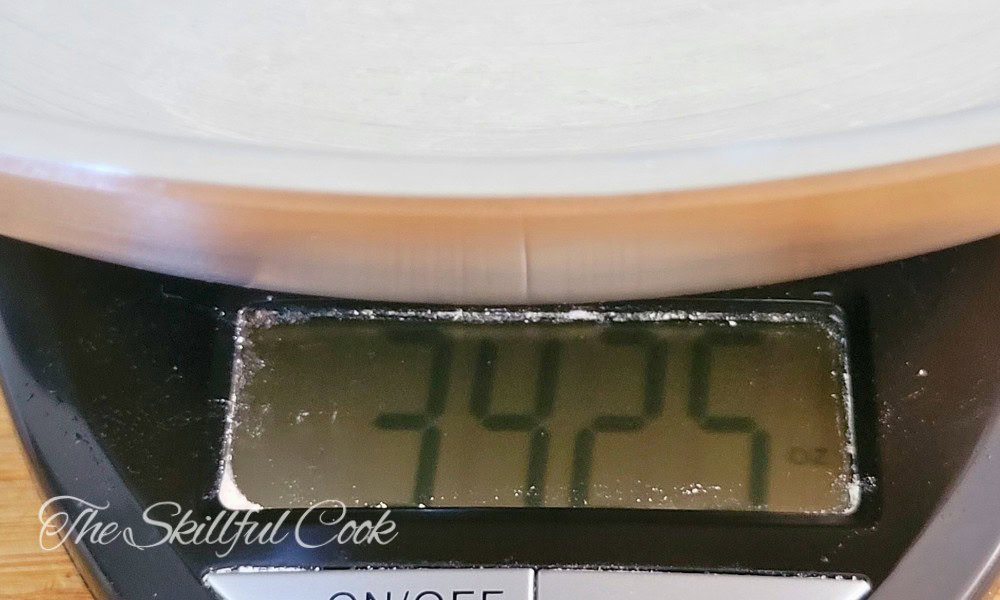
Versatility
Strata pans are very versatile. They achieve a semi-nonstick surface without delicate ceramic or synthetic Teflon – so you can use metal utensils or steel wool on these pans without concern. They can be used in the oven up to 600°F. These pans can be used on gas, electric, ceramic, and induction cooktops. The only place I wouldn’t use it is over a grill or open flame.
Is the Strata Pan Induction Compatible?
Yes, the Strata pan is induction-compatible. Only pans that have iron-based metal bases can be used on induction cooktops. The bottom layer of the Strata is made of 18/0 (magnetic) stainless steel.
Traditional carbon steel pans are very prone to warping on induction cooktops. The stainless steel base of the Strata pan should make it less likely to warp on induction cooktops than regular carbon steel – but I’ve had even 3-ply stainless steel warp on induction before!
Unfortunately, I haven’t had the chance yet to test the Strata pan on induction. However, I can point you to a Youtube review by Cook Culture, where you can see the Strata pan used on induction without warping.
The Strata pan is made with a very slight upward bow to help reduce warping, but the bow wasn’t significant enough to affect cooking performance.
Ease of Use and Maintenance
Like other carbon steel pans, the Strata needs to be seasoned when it arrives from the factory. This adds an extra step for the user that can be daunting if you’ve never tried it before – but Strata makes it as painless as possible. The care guide gives detailed instructions.
To prevent rust in transit, the Strata pan comes with a protective coating (wax and/or oil) that needs to be removed before seasoning. But this layer washed off easily, unlike the nearly impossible-to-remove coating on older Matfer pans.
The sides of a carbon steel pan are sometimes the hardest part to keep seasoned well – but that’s not the case with the Strata! The sides actually get very hot thanks to the aluminum core, leading to consistent seasoning as you cook with the pan.
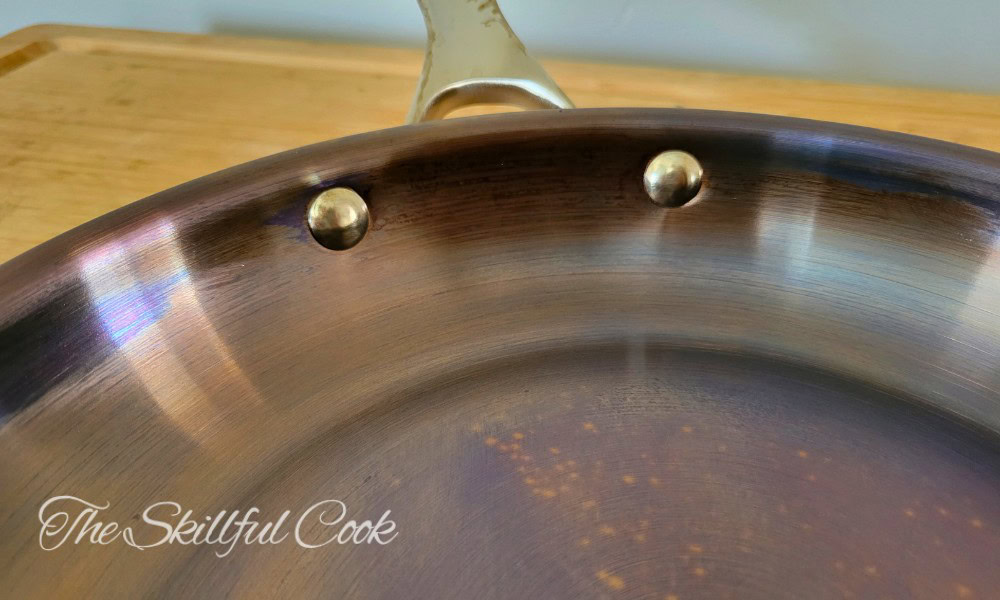
This pan is not dishwasher safe and should never be soaked in water. But since it’s so light, it was very easy to hand wash.
Longevity and Warranty
As of this writing, Strata hasn’t been available long enough to know if it will hold up for a year – let alone a decade. But I can’t see any reason why it won’t. It’s made without any plastic or silicone components. (No PTFE!)
Strata offers a lifetime warranty on its pan. Wear and tear such as denting and discoloration are not covered under warranty – but this is typical for cookware warranties.
I want to give the Strata company points for being extremely clear about what is and is not included in its warranty. This company isn’t hiding behind legalese, and I appreciate that.
Price and Availability
Strata ran its Kickstarter campaign in February 2024, and now, at the end of May, backers are starting to receive their products. As someone who has recently run my own crowdfunding campaign, I want to hand it to the company for this quick product delivery!
Of course, this means that Strata is not available at local stores and you need to order it online.
The price may turn some people off. It’s definitely more expensive than mass-produced stainless and carbon steel pans. Since Strata is manufactured in very small batches, with all the fulfillment and customer support coming from the US, the company can’t keep costs down as much as large manufacturers like Lodge or Merten & Storck. Although the price is high, you’ll get to try a new kind of pan before most cooks even know it exists!
The cost of a Strata pan is comparable to that of boutique stainless brands like Heritage Steel and All Clad. Strata costs about half what you’d pay for handmade US carbon steel like
Health and Safety Considerations
I have next to zero safety concerns regarding the Strata pan. It develops a semi-nonstick cooking surface over time due to layers of cooking oil that polymerize on its surface. There is absolutely no PFAS in this pan – unlike other hybrid pans like Hexclad that claim to be “safe” or environmentally friendly, but contain PTFE (Teflon).
⚠️ There’s a burn risk and a risk of breathing in smoking oil when seasoning this pan – or any carbon steel or cast iron– so exercise caution. Season this pan in a well-ventilated area and avoid using too much oil. Avoid heating the oil above smoke point.
Company and Environmental Impact
The Strata pan was developed in Maryland, US, by a small team of product designers and engineers. I’ve had a chance to interact with the company members a little bit. They’ve been communicative, transparent, and excited about their product. They believe it will solve problems for many home cooks, but are honest about the product’s limitations. Customer service issues are addressed by real people who understand the product and the user base.
Of course, it’s a small company, so Strata doesn’t run huge environmental programs like some of the big cookware corporations do.
Strata pans are manufactured in Suzhou, China. The Strata team says they have a close relationship with the manufacturing company and have worked with them for 8+ years on various projects.
Alternatives to Consider
At the time of this writing, Strata is still offering a preorder discount on the 12” pan – so it’s a great time to invest in this brand-new cookware! But if you want to give the Strata pan a few years to prove itself before trying it, here are some alternatives you could look into:
De Buyer Mineral B Carbon Steel. If you’d like to avoid buying made-in-China cookware, consider the classic French brand De Buyer. We tested and reviewed De Buyer’s popular Mineral B pan in detail.
The OXO Carbon Steel Pan is one of the lightest carbon steel pans available. It is 2mm thick, so may warp more easily than Strata. It comes pre-seasoned.
All Clad Stainless Steel were the original aluminum-core pans. They heat extremely quickly and evenly. They’re also very lightweight – but are not nonstick. It can be difficult to clean burnt oil off these pans.
Caraway Ceramic Nonstick pans cost slightly less than Strata, and are some of the best PTFE-free nonstick pans you can find. But they only last 2-3 years.
The Takeaway: Would I Recommend Strata Carbon Steel?
So is the Strata pan just a creative idea? Or is there truly room in the cookware market for a clad carbon steel pan? I have a kitchen full of high-quality stainless, cast iron, and carbon steel options. When the Strata is hung on my pan rack next to a De Buyer, a Matfer, and an All Clad – is it really something I’ll grab?
After a couple of weeks of using this pan, my answer is “Absolutely, yes.” I found this pan to be slightly less hassle to clean and maintain than typical carbon steel, and to re-season very easily when I accidentally stripped it. The semi-nonstick surface gives it an appeal over stainless steel. And its ability to withstand high heat and metal utensils makes me more likely to use it than my ceramic skillet. All-in-all, I’m very pleased with the Strata pan.

